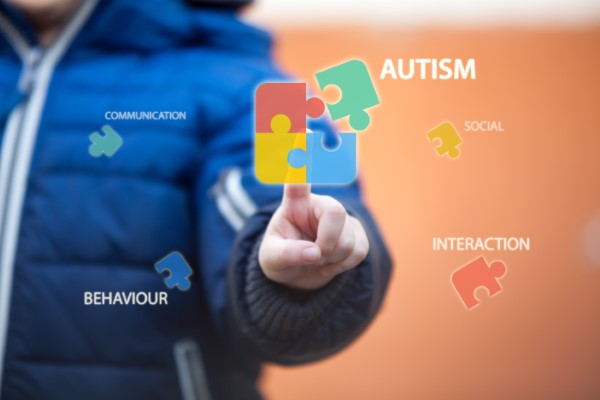The number of children diagnosed with autism spectrum disorder (ASD) is on the rise. The Centers for Disease Control and Prevention (CDC) has estimated that 1 in 68 children in the U.S. have been identified with ASD.
Although, this statistic seems alarming, it also shows us that there’s a growing awareness around a diagnosis and that pediatricians are better trained to pick up the early signs of ASD quickly.
We also have data to show us that early intervention provides the best opportunity for optimal development and outcomes – including improved learning, communication, social skills and more.
In simple terms, ASD is a developmental disorder that affects communication and behavior. A child may have trouble communicating or not understand how to interact with others. Many children with ASD also have a hard time responding to touch or facial gestures and have aversions to certain sights, sounds and other sensations.
So, what can you do as a parent if you think your child may have autism?
Your pediatrician can be a great resource for you if you are concerned. At each well visit, your pediatrician should be assessing your child for signs of developmental or communication challenges.
The American Academy of Pediatrics (AAP) recommends screening all children for ASD at the ages of 18 and 24-months with formalized standardized screening tools like ASQ3 and MCHAT to thoroughly check your child’s development.
These screenings can help identify any challenges early to ensure that interventions like speech or behavior therapies are available to your child.
While an ASD diagnosis may feel overwhelming for a family, your pediatrician is here to help. They should serve as a medical home for your child to help you coordinate with all of the resources you need
As ASD becomes more prevalent, it’s important that parents talk with their children about autism and empower them with empathy and understanding when playing with a sibling, classmate or friend that has ASD.
Helping them understand that kids with ASD have a hard time dealing with the world around them and simple things like the noise of the vacuum may be too loud for them or the tag on the back of the sweater can bother them. It’s similar to the feeling you have when you wear your shoes the wrong way all day, every day!
When it comes to playing with kids with ASD, you can tell your kids that they are usually attached to a favorite toy or a blanket and teach your children to leave their toys alone unless they offer it to them.
It’s also helpful to explain different behaviors that kids with ASD may experience when upset. They may spin, jump, run in circles, make loud noises or make hand movements and the best thing your child can do is give their friend some space. Let them know that this is the only way they can communicate that they are upset.
Every parent has had a moment when your child is staring at that kid with a different behavior. At that time you want to point out a good thing that stands out like their shoes or their backpack, for example “Do you see how nice her backpack is?” This redirection helps your child connect with the person.
Help your child see the person and not what makes them different.



